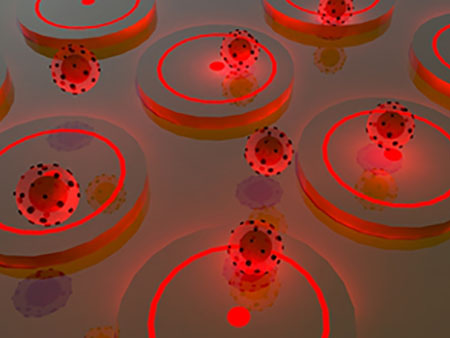
Image Captions and Credits

Can you solve the mystery of the missing professor using photonics? Thanks to fundamental research, investigators can use light-based technologies to solve crimes and explain the previously unexplained.

Adaptive optics have played an important role in advancing astronomy. NSF has been part of an international collaboration that funds the Gemini South telescope in Chile, shown here with its laser blazing, during operations using the Gemini Multi-conjugate adaptive optics System (GeMS). The laser-guided advanced optics system adjusts for distortions caused by Earth's atmosphere during observations.

Using 3-D laser mapping, NSF-funded geologists are able to learn how the earth's topography changes, following an earthquake. Known as LIDAR, this tool is able to provide before and after surveys that give details, down to a few inches, as in this image of post-earthquake topography of Mexico's Pescadores Fault cutting along a ridge.

Imagine having the ability to manipulate light waves to see through a skull right into the brain, or being able to use lasers to diagnose a bacterial infection in a matter of minutes. At the Center for Biophotonic Sensors and Systems (CBSS) at Boston University, technologies enabling these abilities and many others are coming to light. With support from NSF, mechanical engineer Thomas Bifano and his colleagues are developing optical microscopes that can image deep into biological tissue, helping scientists observe molecular-scale activity.

NSF-funded researchers from the University at Buffalo have discovered a way to slow down or trap light within a microchip to process more data. They alternate layers of ultra-thin metal, semiconductors and insulators to make special columns called waveguides, which trap different wavelengths of visible light as they move through the chip, creating a rainbow of colors from the energetic violets to the longer wavelengths of red.

Lasers are quickly changing the state of bioimaging. This image of cells inside a mouse kidney was obtained using a laser and 15 femtosecond laser pulses. It represents some of the research NSF funds that aims to make this technology more targeted and efficient, possibly improving diagnosis and reducing health care costs down the road, and even capturing pictures of some hard-to-spot cancers.
Credit: Scot Landolt, NCAR

Qiaoqiang Gan, assistant professor of electrical engineering at the University at Buffalo, The State University of New York, creates biosensors, devices that use biological or chemical receptors to detect molecules in a sample. Gan's biosensors operate at the nanoscale, at the size of individual molecules.
Back to home page>
Any opinions, findings, conclusions or recommendations presented in this material are only those of the presenter grantee/researcher, author, or agency employee; and do not necessarily reflect the views of the National Science Foundation.


